Department of Agriculture-Special Area for Agricultural Development (DA-SAAD) farmers in Moises Padilla, Negros Occidental lead fresh table eggs supply competition in the province.
The town of Moises Padilla, formerly known as Magallon, is famous for its vast livestock yard – which is the major source of income of its people. Traders all over the island of Negros come to buy, sell, and trade various farm and dairy animals. The town’s official emblem shows the “Carabao” or the Water Buffalo.
Among its 15 barangays largely composed of plains and gentle slopes is Crossing Magallon, about 5 kilometers away from the Poblacion. This is where the Binhi sang Kauswagan sang Sto. Domingo Integrated Farmers’ Association (BISAKASDOIFA) is located.
BISAKASDOIFA has a group of 24 farmers who are mostly making ends meet through their little income by managing a small-scale production of corn, sugarcane, and backyard vegetables as well as raising livestock animals.
Every “tabu” or market day, they trade their harvests in the town proper. A tricycle is available but farmers have to pay a round trip fare of Php 100.
Group’s Inclusion to SAAD
In April 2021, BISAKASDOIFA got their group accredited from the Department of Labor and Employment (DOLE) and eventually got registered to the DA’s Registry System for Basic Sectors for Agriculture (RSBSA).
RSBSA is an essential mechanism of resources distribution, as it electronically compiles basic information of farmers, farmworkers, fishers, and other target agriculture-related beneficiaries of the DA. This registry system managed by the DA-Central Office strengthens the integrity of the data on the agencies’ target beneficiaries, increases efficiency, and minimizes duplication, improving program suitability to the farmers.
The FA then joined a consultation of the SAAD of the DA in their barangay. They learned about the mechanics and the various agricultural interventions it offers. After a series of validation, the group was chosen as one of the program’s beneficiaries since the majority of its members earn below the poverty threshold and have yet to receive assistance from any government agency.
Chairperson Mr. Erwin Salinas said they proposed the poultry project because eggs are an affordable, highly nutritious source of protein for many families in Moises Padilla. In addition, it is also fairly easy to produce.
In September 2021, the association received Php 292,776 worth of SAAD’s Chicken Layer Egg Production Project. This project is composed of 240 head of ready-to-lay pullets, 14 bags of layer feeds, 2 sets of drugs and biologics, 24 pieces of plastic egg tray, 3 sets of chicken crates, and one roll of water hose. They also participated in technical training for Chicken Layer Egg and Health Management.
Flourishing Egg Venture
According to Mr. Salinas, their communal egg poultry farm started to pick a pace on its production after a month of managing the project.
In September 2021, the chicken steadily laid eggs that were sold around their community and three other neighboring haciendas.
For marketing their poultry eggs, BISAKASDOIFA farmers first surveyed households and listed willing buyers of eggs in the nearest barangays. They also approached all local retailers offering to become a local supplier. So far, they are currently providing eggs for at least 80 households in their community and three other haciendas. Some even order ahead of time.
The members utilize the awarded egg weighing scale to make their production more efficient. A tray of small eggs is sold at Php 180, medium eggs at Php 195, large eggs at Php 220, extra-large eggs at Php 240, and jumbo eggs at Php 270.
From September 2021 to May 2022, the group harvested a total of 1,063 trays of eggs, 271 were of small sizes, 275 were medium, 246 were large, 120 were extra-large, and 66 were jumbo.
BISAKASDOIFA farmers were able to earn a gross income worth Php 203,145 after selling their egg produce for eight months. They deducted their expenses from the procurement of layer feeds, hauling fees, and dividends intended for each member which amounted to Php 90,950. Finally, the group reported a net income of Php 112,195.Table 1. BISAKASDOIFA ‘s Egg Production (September 2021 – May 2022)
| Date of Harvest | Volume of harvest (tray) |
Unit of Measure | Price (Php/unit) |
Gross Income (Php) |
| September 25 – October 25, 2021 | 18 | small | 180.00 | 3,240.00 |
| 14 | medium | 195.00 | 2,730.00 | |
| 7 | large | 220.00 | 1,540.00 | |
| October 26, 2021 – November 28, 2021 | 40 | small | 180.00 | 7,200.00 |
| 49 | medium | 195.00 | 9,555.00 | |
| 26 | large | 220.00 | 5,720.00 | |
| 16 | extra-large | 240.00 | 3,840.00 | |
| November 29, 2021 – December 30, 2021 | 43 | small | 180.00 | 7,740.00 |
| 40 | medium | 195.00 | 7,800.00 | |
| 32 | large | 220.00 | 7,040.00 | |
| 13 | extra-large | 240.00 | 3,120.00 | |
| 8 | jumbo | 270.00 | 2,160.00 | |
| December 31, 2021 – January 20, 2022 | 47 | small | 180.00 | 8,460.00 |
| 41 | medium | 195.00 | 7,995.00 | |
| 44 | large | 220.00 | 9,680.00 | |
| 15 | extra-large | 240.00 | 3,600.00 | |
| January 21, 2022 – February 21, 2022 | 45 | small | 180.00 | 8,100.00 |
| 39 | medium | 195.00 | 7,605.00 | |
| 41 | large | 220.00 | 9,020.00 | |
| 20 | extra-large | 240.00 | 4,800.00 | |
| 13 | jumbo | 270.00 | 3,510.00 | |
| February 22, 2022 to March 22, 2022 | 36 | small | 180.00 | 6,480.00 |
| 31 | medium | 195.00 | 6,045.00 | |
| 45 | large | 220.00 | 9,900.00 | |
| 17 | extra-large | 240.00 | 4,080.00 | |
| 16 | jumbo | 270.00 | 4,320.00 | |
| March 22, 2022 – April 18, 2022 | 29 | small | 180.00 | 5,220.00 |
| 37 | medium | 195.00 | 7,215.00 | |
| 30 | large | 220.00 | 6,600.00 | |
| 15 | extra-large | 240.00 | 3,600.00 | |
| 14 | jumbo | 270.00 | 3,780.00 | |
| April 19, 2022 – May 2, 2022 | 13 | small | 180.00 | 2,340.00 |
| 24 | medium | 195.00 | 4,680.00 | |
| 21 | large | 220.00 | 4,620.00 | |
| 24 | extra-large | 240.00 | 5,760.00 | |
| 15 | jumbo | 270.00 | 4,050.00 | |
| Total | 1,063 | 203,145.00 |
Mr. Salinas expressed gratitude for the SAAD livelihood project and recognized it as a big help to their community.
“Isa gid kami sa mga debuenas nga grupo nga nabuligan sang SAAD program. Kag ako, upod sa akon mga kaupdan, nagapasalanat guid kay nakatabang gid ang bulig sang programa sa amon,” said Mr. Salinas.
(We are indeed among the fortunate groups who were able to receive assistance from the SAAD Program. I, together with my members, express our gratitude because the program greatly helped us).
Management Practices
A week before the official distribution of the intervention, BISAKASDOIFA farmers built a housing facility as their counterpart to the project to protect the laying hens from extreme weather conditions and predators.
Each member also contributed bamboo poles and shelled out Php 300 to procure materials for the construction of the housing situated in a lot owned by a member that is distant enough from the residential area.
Mr. Salinas said each of them takes turns in the maintenance of their poultry farm instead of rearing the laying hens individually at home. Each member is responsible for the cleanliness of the housing and they make sure that correct data is being logged in the daily production record. A paper audit is being conducted every week.
BISAKASDOIFA uses carbonized rice husk as absorbent bedding or litter to minimize the offensive odor released from livestock waste. Rice hulls can be used to produce mesoporous molecular sieves, which are applied as catalysts for various chemical reactions such as chicken manure.
The beneficiaries also followed proper feeding of the laying hens, supplying the right amount of feeds, vitamins, and antibiotics when there are signs and symptoms of bird flu, and keeping them away from noise and distraction.
SAAD Area Coordinator Jezer John Chispa assigned to the municipality and agriculture technicians of the Municipal Agriculturist Office offered technical assistance and expertise to assist in the needs of the association.
In attracting and retaining a cadre of loyal customers, the BISAKASDOIFA adheres to quality standards in its production system.
Mr. Salinas said they ensure that all eggs they sell are intact, clean, and fresh. They also avoid hoarding eggs and trade their harvests a day after they have been laid.
Proper handling of eggs is carefully practiced by each member so as to avoid cracks or dirty eggs exposing them to the contamination that is likely to cause illnesses when they are consumed.
In order to avoid egg-to-egg bumps and eggs getting trampled on by chickens at the bottom of the cage, each assigned member picks up eggs more than three times a day, and arranges the last egg pick up before turning off the lights at night. Through this method, they reduce the time the eggs stay in the cage and also avoid the pecking habits of the chickens.
During the feeding process, farmers make sure that the feed is balanced. Recognizing that the nutrient level of the feed is directly related to the strength and hardness of the eggshell, they prepare feeds with comprehensive nutrients in stages, especially calcium, phosphorus, vitamin D3, and crude protein.
Plans
BISAKASDOIFA plans to utilize their profit in purchasing additional ready-to-lay pullets to increase the group’s egg production as well as replenish the stocks from SAAD.
To intensify the positive and consistent outcome of their livelihood project, the association wants to come up with egg packaging and expand its market by supplying to restaurants, bakeries, and cafes. They are also looking forward to using online platforms to promote and trade their egg produce. ###
Writer: Christ John Gamarcha, SAAD 6 Information Officer

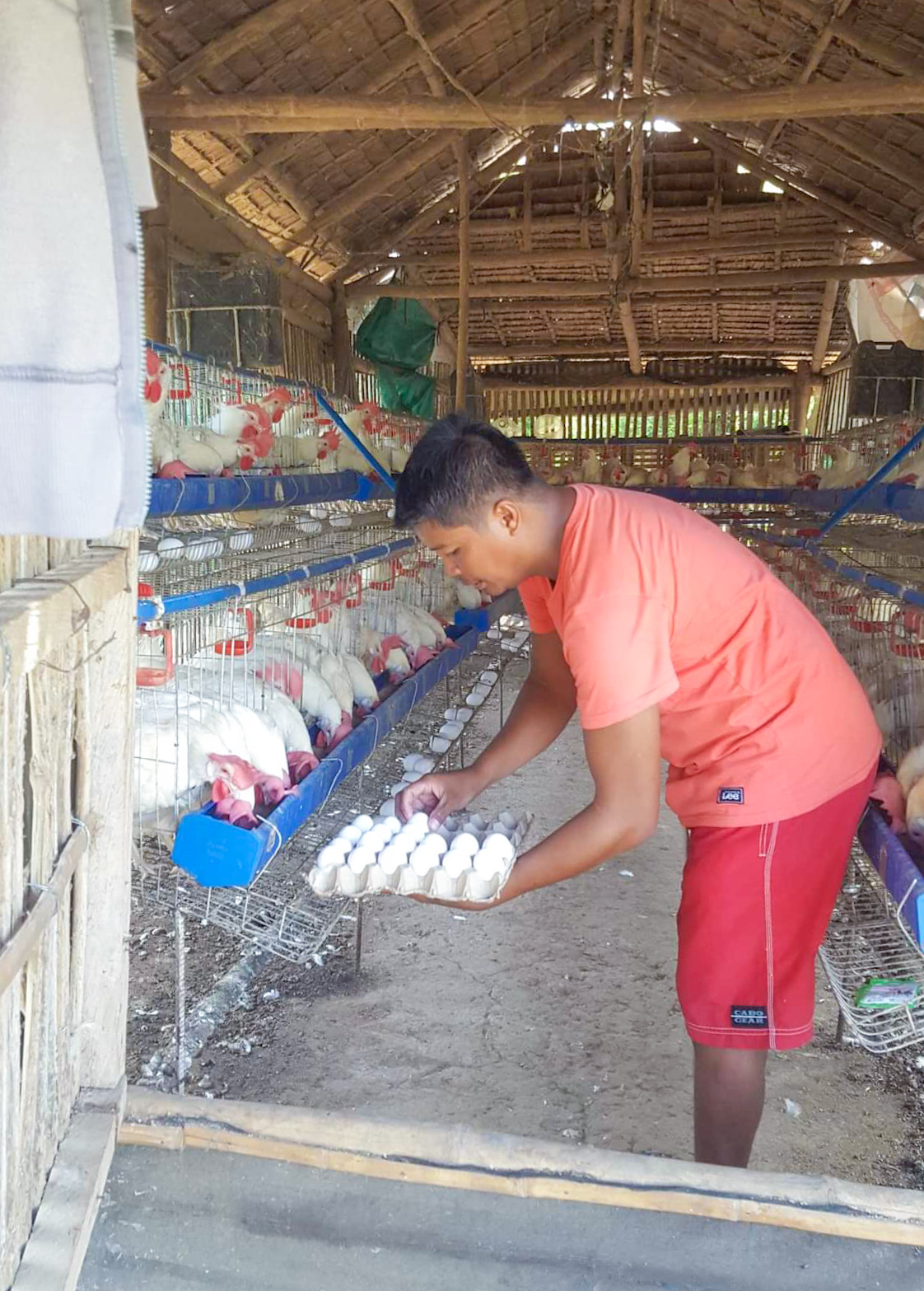
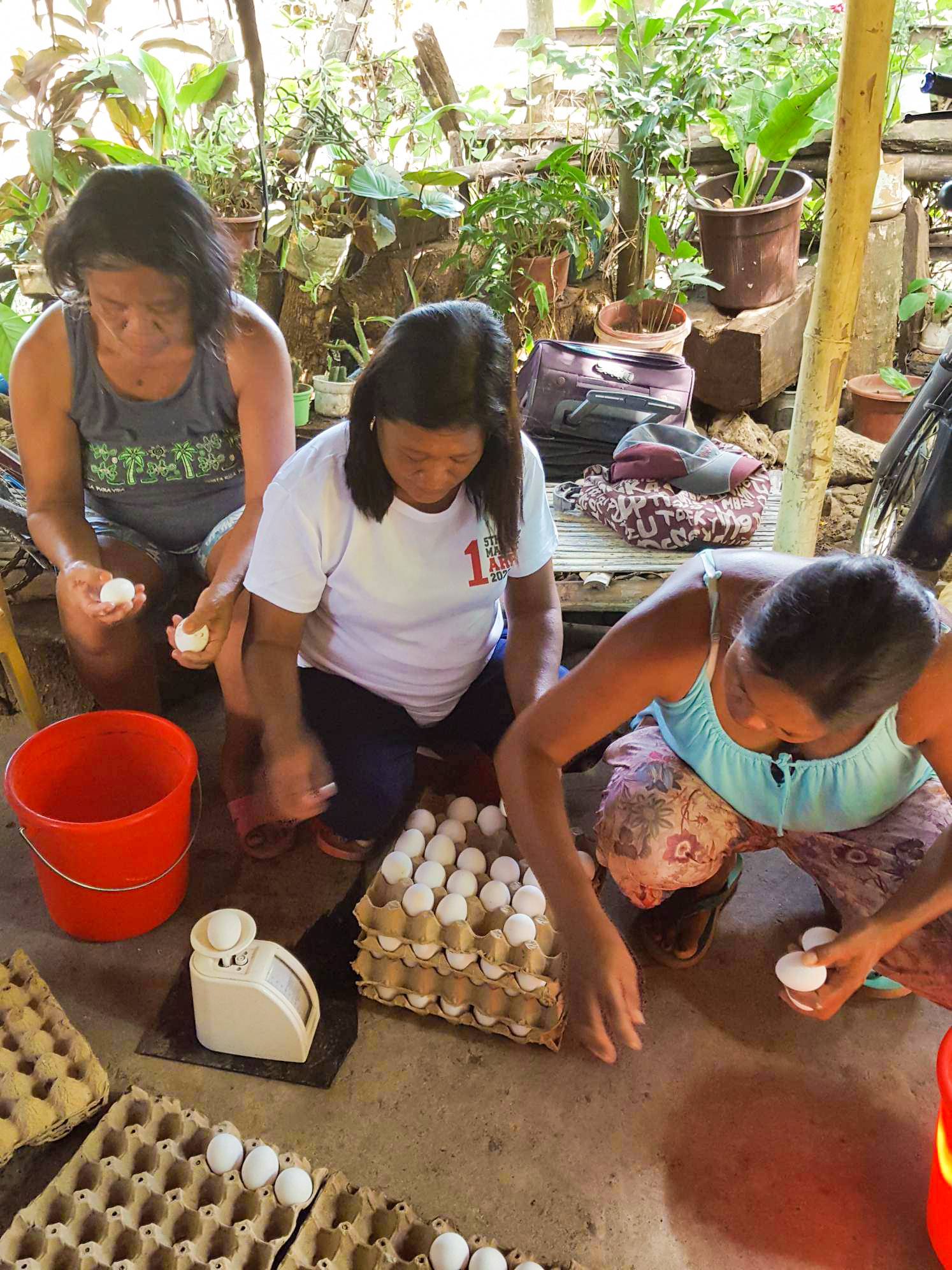

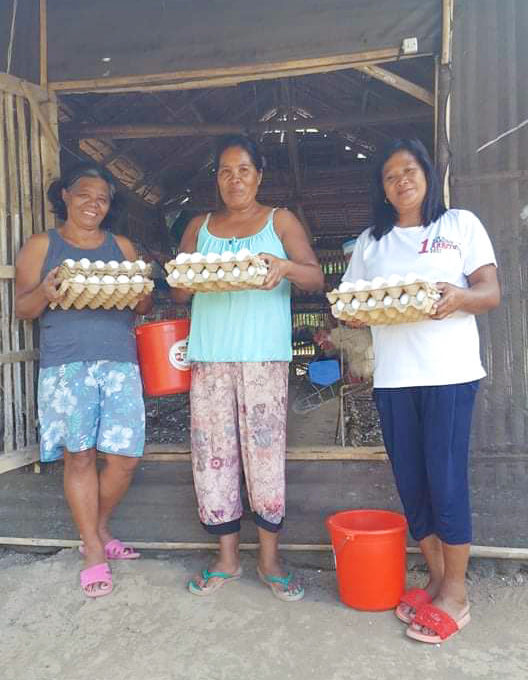
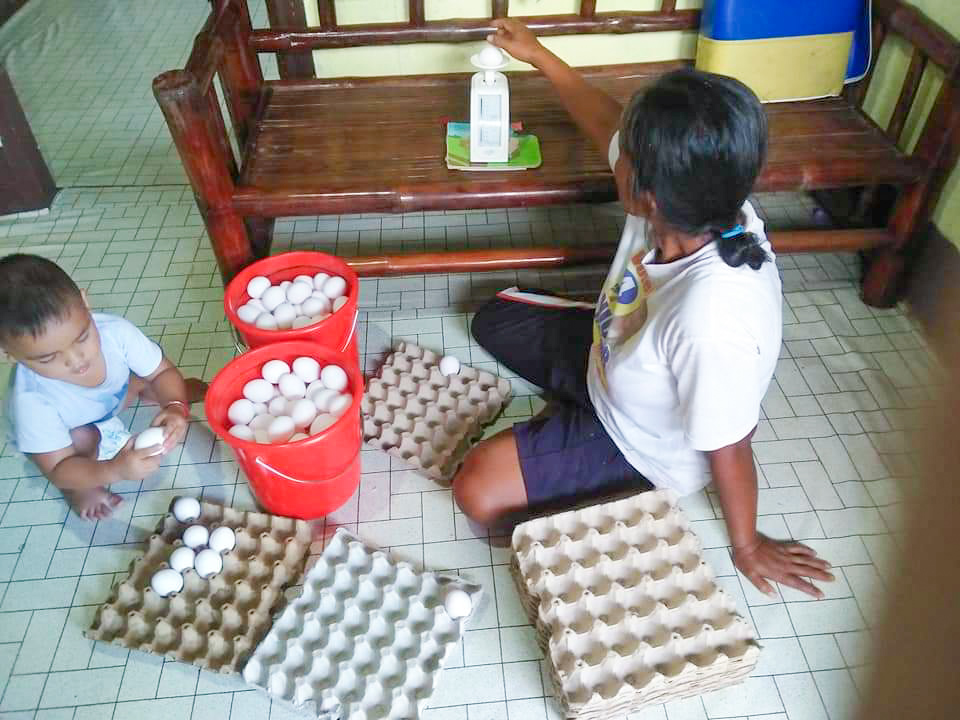

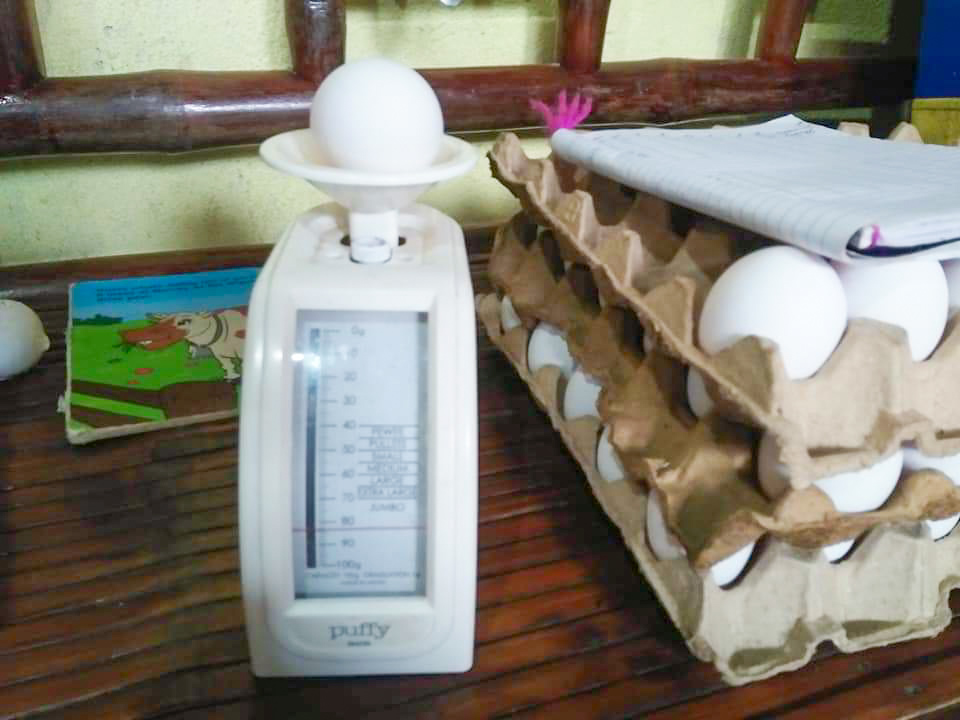
Comments (0)